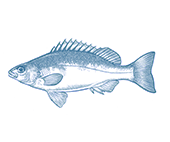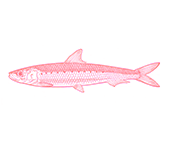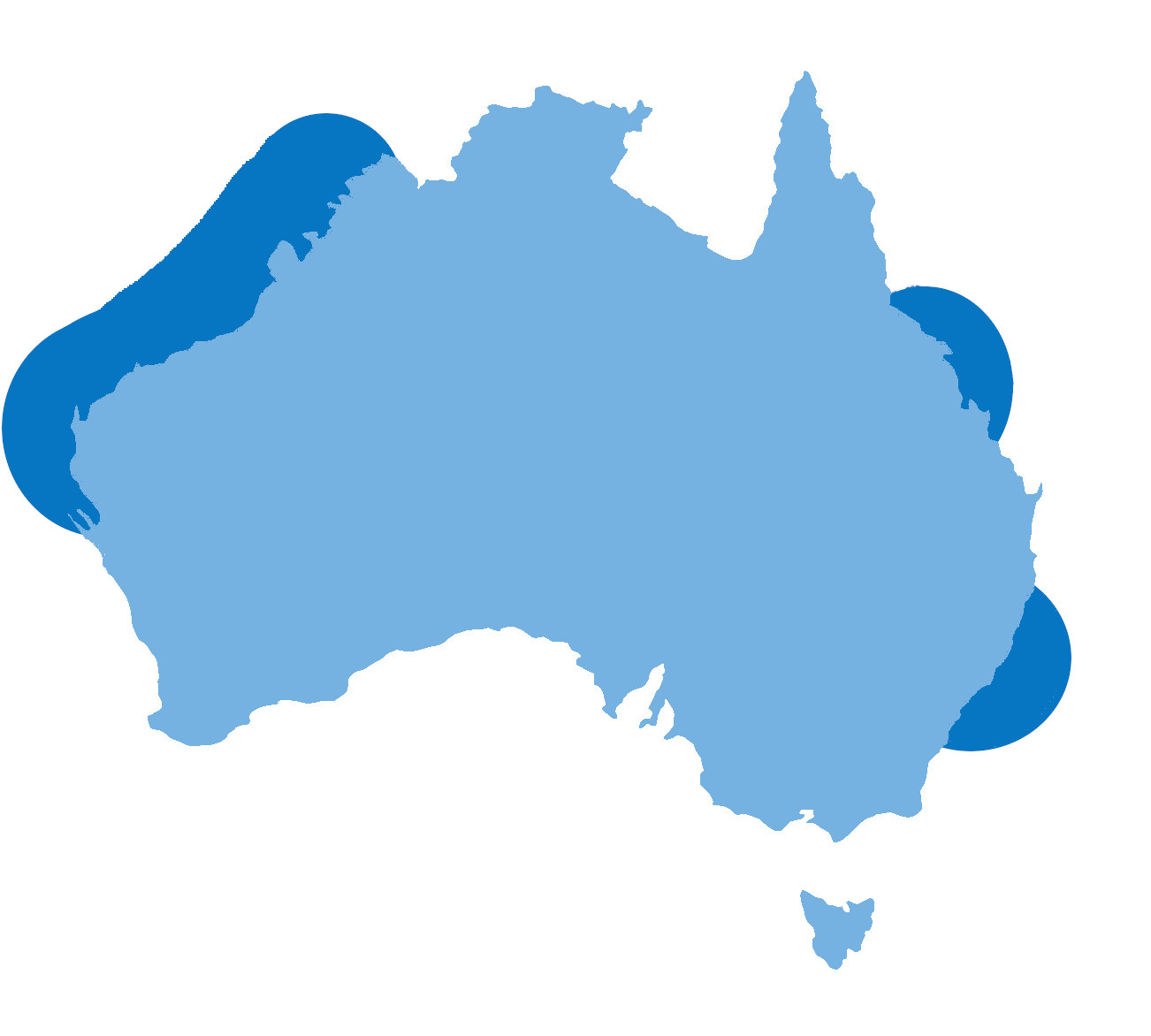





- Eat Less
Wild Caught
Region:
Commonwealth waters
- Royal red prawns are caught in the Commonwealth SESSF Commonwealth Trawl Sector using demersal otter trawl fishing methods in depths around 400-500m off NSW.
- Royal red prawn populations are poorly understood but are likely to be healthy at recent catch levels.
- The fishery reports very low levels of threatened and protected species but fisher reporting is not considered credible and there is inadequate validation of fishery impacts from independent observers.
- The fishery may pose a risk to seriously overfished deepwater shark populations, though measures are in place that provide some protection to those species.
- The fishery operates around a major global ocean heating hotspot but does not explicitly account for climate change when setting future catch limits. Significant research is welcome in this area but is overdue.
- There has been significant research into the ecosystem impacts of the fishery, but marine park protections are seriously inadequate and if improved could significantly increase the resilience of target and bycatch species, and vulnerable seafloor habitats.
- The fishery is expected to undergo its second round of major reforms, and implement vital camera monitoring across the fleet in coming years. This has the potential to significantly improve the GoodFish ranking of this fishery in future.
- Commonwealth Southern and Eastern Scalefish and Shark Fishery (Commonwealth Trawl Sector) (33t in 2020/21)
Royal red prawns are a deepwater species of prawn, caught mostly off the eastern coast of NSW around Sydney. They can live as deep as 800m, but are mainly caught around depths of 400-500m. They are caught in a trawl fishery managed by the Commonwealth Government.
While there is little scientific understanding of the health of Royal red prawn populations, catches in recent years have been lower than historic levels and there are positive recent trends in catch rates which suggests there are no serious concerns.
They are caught using bottom trawl fishing methods in the Commonwealth-managed Southern and Eastern Scalefish and Shark Fishery (SESSF), which is Australia’s largest single source of locally caught seafood for the domestic market.
The fishery has made significant progress in reducing protected seabird bycatch, though fur seal bycatch is potentially increasing. Seal Excluder Devices (SEDs), which act as escape hatches for seals that enter trawl nets, are mandatory. All trawl boats must have a seabird management plan in place to guide how each boat aims to reduce interactions with seabirds while actively fishing. Many of the solutions to seabird interactions have been fishing industry-led innovations and are proving highly successful in reducing these impacts.
Targeted royal red prawn fishing has less bycatch than some other trawl fishing within the SESSF, and while the fishery encounters fewer seriously overfished bycatch species, there are concerns for deepwater shark populations that overlap the fishing grounds. These concerns are mostly driven by the lack of investment in understanding these shark populations and the level of impact from the fishery.
Independent monitoring of the part of the SESSF that catches Royal red prawns has been insufficient to ensure robust information is collected on protected species bycatch and fish discarding, which can occur when fish are caught in trawl nets that the fisher holds no quota for, so cannot land without financial penalty. Only 2.1% of fishing effort was subject to vital independent observation in 2019. This creates significant risk as it impedes managers in reliably calculating the total impact (of all fishery mortality from retained plus the fish caught but thrown back) on fish stocks from the fishery. The fishery is set to introduce video monitoring across the fleet in 2024 which is welcome and could substantially address this issue, but it is notable that improving this information collection was also a condition of a fishery reform process in 2006 that was not followed through.
The SESSF operates around a global ocean heating hotspot, warming at almost four times the global average. While serious climate impacts have been attributed to declining SESSF fish stocks for around a decade, there is still no explicit consideration of climate impacts when setting future catch limits. Significant research is underway in this area, which is welcome but overdue.
There has been considerable investment in scientific research around the ecosystem and habitat impacts of the fishery, but this has not been supported by sufficient implementation of meaningful protections from fishing and climate-related impacts in the fishery, which have both been severe. Commonwealth waters marine parks are in place throughout the fishery but were designed primarily to avoid key fishing grounds, so confer little benefit. Marine parks should be a valuable and cost-effective tool for protecting vulnerable species and habitats; providing both resilience and a scientific resource to manage climate impacts. Improving marine park protection will be critical to addressing and rebuilding the future sustainability of the SESSF fishery.


